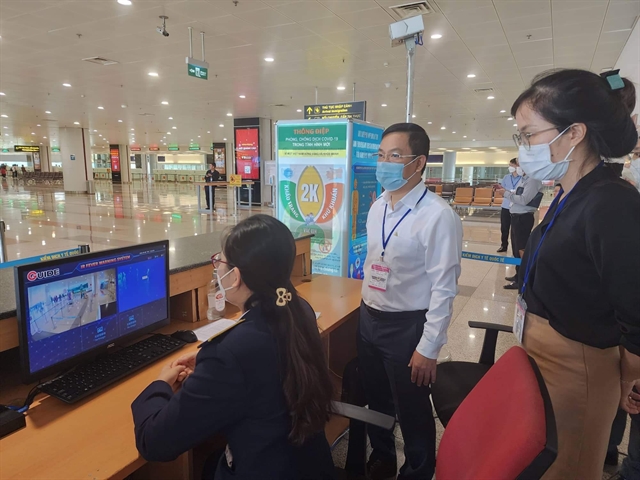 |
| A temperature scanner at an airport. The MOH calls for strengthening monitoring at border checkpoints, promptly detecting, isolating, and managing suspected or affected cases. VNA/VNS Photo |
HÀ NỘI – According to the Ministry of Health’s (MOH) Centre for Disease Control (VNCDC), the World Health Organization reports ongoing variants in the COVID-19 pandemic, including closely monitored ones like XBB.1.5, XBB.1.16, EG.5, BA.2.86 and JN.1.
Additionally, other emerging dangerous diseases worldwide, such as Nipah disease in India, H5N1 influenza in Cambodia, H1N2 influenza in the United Kingdom, MERS-CoV in the Middle East, and the increase in respiratory infections in some countries, require attention.
To proactively manage infectious disease entry, the VNCDC recommends regular updates on global infectious disease risks. This facilitates the proactive application of monitoring and prevention measures at border checkpoints, especially crucial during the Tết (Lunar New Year) holidays.
The MOH calls for strengthening monitoring at border checkpoints, promptly detecting, isolating, and managing suspected or affected cases. Updating procedures for health inspection activities at each border checkpoint based on regulations is also essential.
According to the MOH, the review and update of preventive plans for various disease scenarios at border checkpoints requires coordination with relevant authorities and local health agencies. Close collaboration with the Border Management Committee is necessary for infrastructure and equipment proposals, following MOH guidelines.
Furthermore, coordination with Epidemiology and Pasteur Institutes is recommended for training and technical support for health inspection officers. VNS
- Reduce Hair Loss with PURA D’OR Gold Label Shampoo
- Castor Oil Has Made a “Huge” Difference With Hair and Brow Growth
- Excessive hair loss in men: Signs of illness that cannot be subjective
- Dịch Vụ SEO Website ở Los Angeles, CA: đưa trang web doanh nghiệp bạn lên top Google
- Nails Salon Sierra Madre
 VnExpress News The News Gateway of Vietnam
VnExpress News The News Gateway of Vietnam





